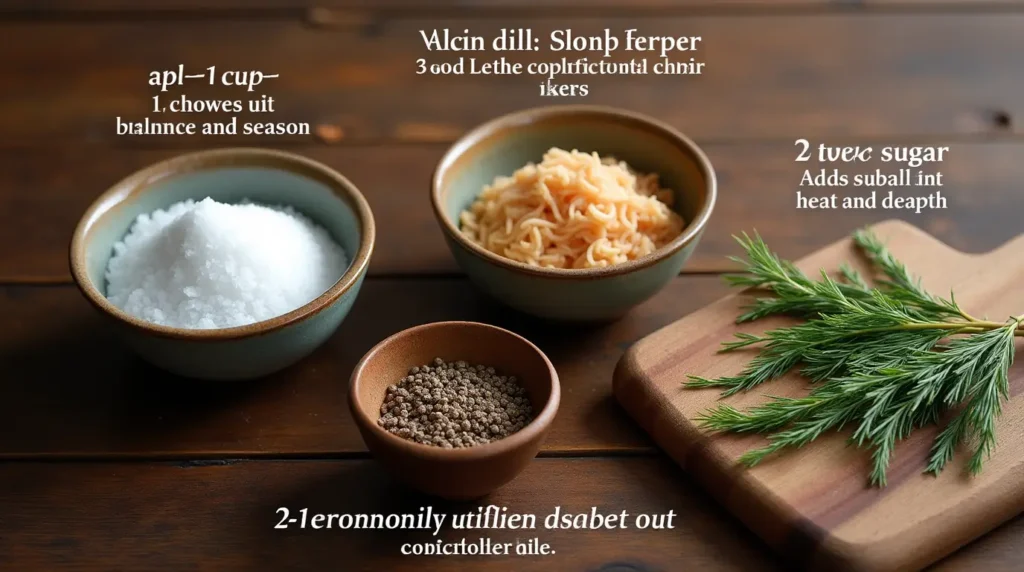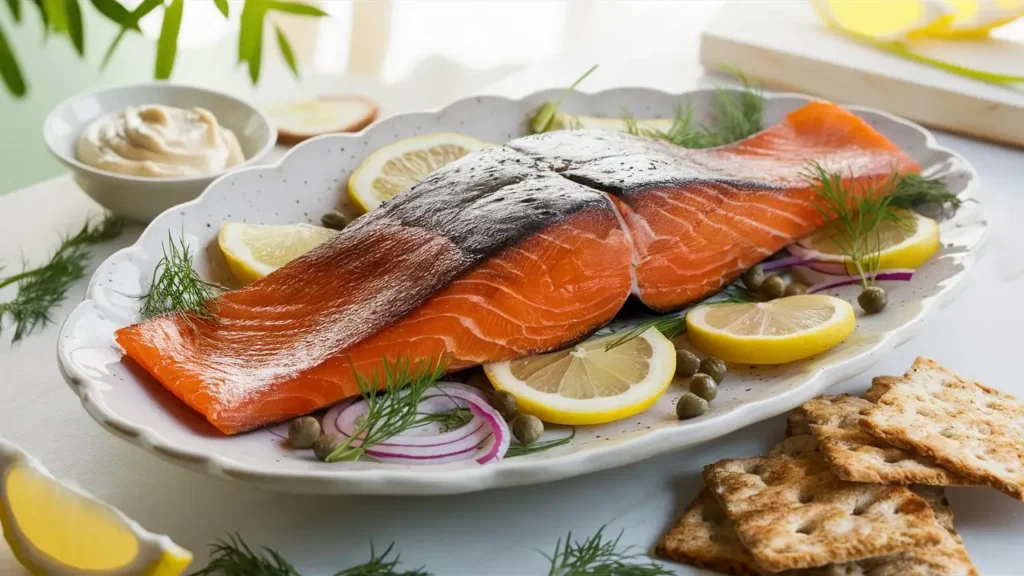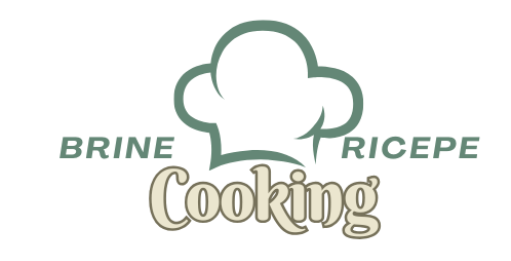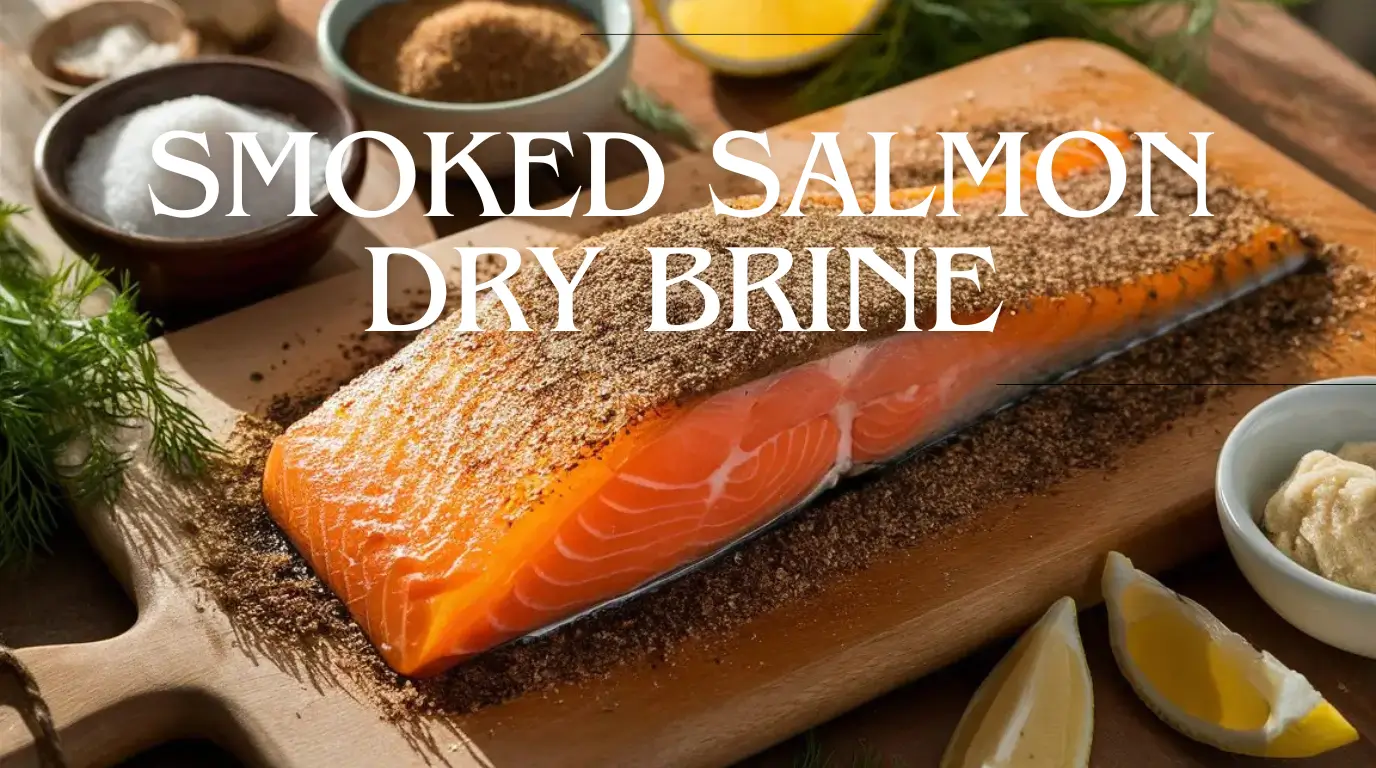Picture yourself savoring a perfectly Smoked Salmon Dry Brine piece of salmon, its flesh tender and infused with a delicate balance of sweet and savory flavors. There’s something truly magical about the rich, smoky essence of homemade smoked salmon that can transform an ordinary meal into an unforgettable culinary experience.
My journey with smoked salmon began during a weekend visit to my grandfather’s lakeside cabin in the Pacific Northwest. Watching him carefully prepare his catch using a recipe passed down through generations sparked a passion that would forever change my approach to preparing this beloved fish. Today, I’m sharing these time-tested secrets to help you master the art of smoking salmon at home.
Table of Contents
Understanding Dry Brine: Your Gateway to Perfect Smoked Salmon
Unlike wet brining, which involves submerging your salmon in a saltwater solution, dry brining is a simpler yet equally effective method that lets you achieve that sought-after texture and flavor. When you apply a dry brine to your salmon, you’re essentially drawing out moisture while simultaneously infusing the flesh with a perfect balance of seasonings.
What sets dry brining apart is its ability to concentrate the salmon’s natural flavors while creating that characteristic firm, silky texture that makes perfectly smoked salmon so irresistible. You’ll find this method not only delivers superior results but also proves far less messy than traditional wet brining.
Creating Your Perfect Dry Brine Mixture
The secret to exceptional smoked salmon lies in starting with the right dry brine combination. Your brine mixture serves as the foundation for the entire smoking process, influencing both the final texture and flavor profile of your fish.
Essential Ingredients and Their Roles
For the base of your dry brine, you’ll need:
- Kosher Salt: Choose Diamond Crystal or Morton’s kosher salt for its pure, clean taste and ideal crystal size. The larger flakes dissolve gradually, ensuring even distribution throughout the brining process.
- Brown Sugar: This ingredient brings more than just sweetness – it creates a beautiful caramelized exterior while balancing the salt’s intensity. Dark brown sugar adds deeper molasses notes, while light brown sugar provides a more subtle sweetness.
- Fresh Ground Black Pepper: Opt for freshly ground pepper rather than pre-ground for a more vibrant, aromatic result that complements the salmon’s natural oils.
The Perfect Dry Brine Recipe
Here’s a neatly formatted table for the ingredients, their amounts, and purposes:
| Ingredient | Amount | Purpose |
|---|---|---|
| Kosher Salt | 1 cup | Draws out moisture and seasons |
| Brown Sugar | 1 cup | Balances salt and aids browning |
| Black Pepper | 2 tbsp | Adds subtle heat and depth |
| Fresh Dill (optional) | 2 tbsp | Provides classic herbaceous notes |

Preparing Your Salmon for Success
Selecting and Preparing Your Fish
Begin with high-quality salmon fillets that feature:
- Bright, firm flesh
- Intact skin
- Fresh, ocean-like scent
- No brown spots or discoloration
Before applying your brine, pat the fillets completely dry with paper towels. This step ensures better brine adhesion and more effective moisture extraction.
The Brining Process
- Spread an even layer of your dry brine mixture over all exposed flesh surfaces
- Place the salmon in a glass or ceramic dish, skin-side down
- Cover loosely with plastic wrap
- Refrigerate for 8-12 hours, depending on fillet thickness
Preparing for Smoking
After brining, you’ll need to:
- Rinse the fillets thoroughly under cold water
- Pat dry with paper towels
- Place on a wire rack in the refrigerator for 1-2 hours
- Look for the formation of a pellicle – a slightly tacky surface that helps smoke adhere
Mastering the Smoking Process
Setting Up Your Smoker
The key to perfectly smoked salmon lies in maintaining consistent, low temperatures throughout the smoking process. Your target temperature range should be between 150°F and 175°F. This lower temperature range allows the salmon to smoke gradually, developing deep flavor while retaining moisture.
Select your wood chips carefully – alder, apple, or cherry wood provide mild, sweet smoke that enhances rather than overwhelms the salmon’s natural flavor. Avoid stronger woods like mesquite or hickory that might overpower the delicate fish.

The Smoking Journey
Position your prepared salmon fillets skin-side down directly on the smoker grates. This orientation helps protect the flesh while allowing even smoke penetration. You’ll want to smoke your salmon until it reaches an internal temperature of 145°F, typically taking 2-4 hours depending on your smoker’s temperature stability and the thickness of your fillets.
To monitor progress, insert a reliable meat thermometer into the thickest part of the fillet. The internal temperature of smoked salmon should rise gradually – if it’s climbing too quickly, reduce your smoker’s temperature to maintain that crucial low-and-slow cooking process.
Troubleshooting and Tips for Success
Common Challenges and Solutions
- Too Salty: If your first batch turns out too salty, reduce the brining time or adjust the salt-to-sugar ratio in your next attempt
- Dry Texture: This usually indicates too high smoking temperatures or overcooking. Remember to maintain those lower temperatures and monitor internal temperature closely
- Uneven Smoking: Rotate your salmon pieces halfway through if you notice uneven coloring or smoking
Storage and Serving Suggestions
Your finished smoked salmon will keep for:
- 1 week in the refrigerator (stored in an airtight container)
- Up to 3 months in the freezer (vacuum-sealed for best results)
Create memorable dishes by serving your smoked salmon:
- Arranged on a charcuterie board with capers and cream cheese
- Flaked into scrambled eggs for a luxurious breakfast
- Tossed with pasta in a light cream sauce
- Layered on bagels with cream cheese and fresh dill
Frequently Asked Questions
Can I use table salt instead of kosher salt?
While possible, stick with kosher salt for best results. Table salt’s finer grain makes it easier to over-salt your salmon. If you must use table salt, reduce the quantity by half.
How do I know when my salmon is properly smoked?
Your salmon is ready when it reaches an internal temperature of 145°F and flakes easily with a fork. The flesh should be firm but not dry, with a rich, smoky aroma.
What’s the best wood for smoking salmon?
Alder wood is traditional for smoking salmon, offering a mild, sweet smoke that complements without overpowering. Apple and cherry wood are excellent alternatives, providing similarly gentle smoke profiles.
Do I need a special smoker?
Any smoker that can maintain temperatures between 150°F and 175°F will work well. Whether you’re using an electric, pellet, or charcoal smoker, temperature control is more important than the type of smoker.
Your Journey to Smoked Salmon Mastery
Creating perfectly smoked salmon at home might seem daunting at first, but with this guide, you’re well-equipped to achieve professional-quality results. Remember that each smoking session is an opportunity to refine your technique and develop your preferred flavor profile.
Start with this basic recipe, then experiment with different wood combinations or additional seasonings in your salmon dry brine. Document your process and results – this will help you perfect your technique over time.
Ready to elevate your culinary skills? Gather your ingredients, prepare your smoker, and embark on your smoked salmon adventure. Share your results with fellow food enthusiasts, and don’t forget to experiment with different serving suggestions to discover your favorite way to enjoy this delectable treat.

